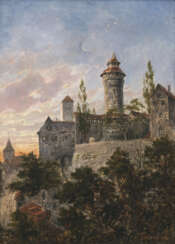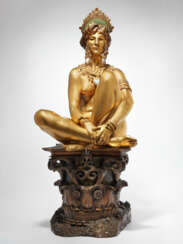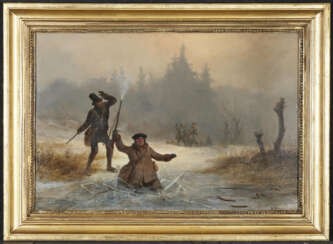römer 182
 Zimmermann.jpg)


Jean-Léon Gérôme was a prominent 19th-century French painter, a representative of the academic school of painting. His paintings are notable for their impeccable composition and exquisite colour palette.
Jean-Léon Gérôme did not accept the work of the Impressionists, whom he considered to be the ignominy of French art. This has earned him a controversial reputation as a fierce supporter of academism and a persecutor of new movements.




Peter Franz Caesar Bimmermann was a German-Dutch landscape painter.






Jean-Léon Gérôme was a prominent 19th-century French painter, a representative of the academic school of painting. His paintings are notable for their impeccable composition and exquisite colour palette.
Jean-Léon Gérôme did not accept the work of the Impressionists, whom he considered to be the ignominy of French art. This has earned him a controversial reputation as a fierce supporter of academism and a persecutor of new movements.


Jean-Léon Gérôme was a prominent 19th-century French painter, a representative of the academic school of painting. His paintings are notable for their impeccable composition and exquisite colour palette.
Jean-Léon Gérôme did not accept the work of the Impressionists, whom he considered to be the ignominy of French art. This has earned him a controversial reputation as a fierce supporter of academism and a persecutor of new movements.
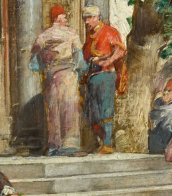

Carl August Sommer was a German landscape painter.


Jean-Léon Gérôme was a prominent 19th-century French painter, a representative of the academic school of painting. His paintings are notable for their impeccable composition and exquisite colour palette.
Jean-Léon Gérôme did not accept the work of the Impressionists, whom he considered to be the ignominy of French art. This has earned him a controversial reputation as a fierce supporter of academism and a persecutor of new movements.


Jean-Léon Gérôme was a prominent 19th-century French painter, a representative of the academic school of painting. His paintings are notable for their impeccable composition and exquisite colour palette.
Jean-Léon Gérôme did not accept the work of the Impressionists, whom he considered to be the ignominy of French art. This has earned him a controversial reputation as a fierce supporter of academism and a persecutor of new movements.


Jean-Léon Gérôme was a prominent 19th-century French painter, a representative of the academic school of painting. His paintings are notable for their impeccable composition and exquisite colour palette.
Jean-Léon Gérôme did not accept the work of the Impressionists, whom he considered to be the ignominy of French art. This has earned him a controversial reputation as a fierce supporter of academism and a persecutor of new movements.


Jean-Léon Gérôme was a prominent 19th-century French painter, a representative of the academic school of painting. His paintings are notable for their impeccable composition and exquisite colour palette.
Jean-Léon Gérôme did not accept the work of the Impressionists, whom he considered to be the ignominy of French art. This has earned him a controversial reputation as a fierce supporter of academism and a persecutor of new movements.


Ferdinand Heilbuth was a nineteenth-century German painter who spent much of his career in France. He is particularly known as a watercolorist, one of the first members of the Society of French Watercolorists.
Heilbuth initially became famous for his portraits done in the style of Titian and Rembrandt. Later, however, he abandoned the portrait genre entirely in favor of historical and everyday subjects and began to depict scenes from the high society of past times. Then, having become a plein air painter, he painted landscapes in Paris and made sketches in London. His paintings were distinguished by their lightness, airiness and masterful technique, and his watercolors were especially skillful.


Wilhelm Brandenburg was a German landscape painter of the Düsseldorf School of painting.
Wilhelm Brandenburg created a large number of romantic views of the Rhine and Moselle landscapes. He also travelled to the Tyrol, Upper Bavaria and Switzerland.




Joseph Jansen was a German landscape painter of the Düsseldorf School.
Joseph Jansen was a student at the Düsseldorf Academy of Painting, known for his landscapes of the majestic Swiss Alps and views of cities along the Rhine and Moselle. From 1850, Jansen began exhibiting in various German galleries and abroad. Because of his skill, Jansen is considered an outstanding landscape painter of the 19th century. His daughter Emilie, born in 1871, became a still life painter.




Gottlieb Daniel Paul Weber was a German artist. Weber is known for his ethereal and timeless landscape paintings of early northeast America. He emigrated to the U.S. in 1848 and though he returned to Germany around 1860 his influence on American landscape painting was still felt for years.

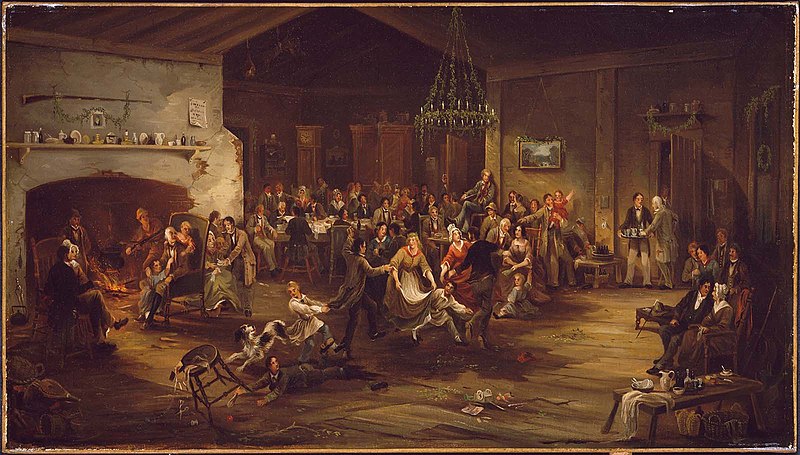


Josef Anton Strassgschwandtner was an Austrian painter and lithographer, celebrated for his detailed hunting, military, and genre scenes. Born in Vienna in 1826, he exhibited artistic talent from an early age, which was nurtured despite being orphaned and raised in an orphanage. His formal education in art commenced at the Academy of Fine Arts Vienna between 1843 and 1845, where he studied under notable instructors like Leopold Kupelwieser and Franz Steinfeld.
Josef Anton Strassgschwandtner's works gained prominence for their vibrant depiction of military and hunting scenes, earning him the nickname "Austrian Raffet" after the French lithographer Auguste Raffet. His client base was diverse, including hunting associations, horse enthusiasts, and military personnel, which reflects his versatility and appeal across different circles. Despite his success, Strassgschwandtner's life took a tragic turn when he became mentally deranged in 1879 and was subsequently institutionalized until his death in 1881.
His legacy continues to be celebrated, with a street in Vienna named after him and his works featured in various exhibitions. For collectors and experts in art and antiques, Josef Anton Strassgschwandtner's pieces represent a unique blend of historical and artistic significance, offering a glimpse into the Austrian culture of his time.
If you're intrigued by Josef Anton Strassgschwandtner's life and works and want to stay updated on sales or auction events featuring his art, consider subscribing for updates. This subscription will keep you informed about opportunities to acquire pieces by this notable Austrian artist.


Johannes Bartholomäus Duntze was a German landscape painter.


Joseph Brunner was a 19th century Austrian painter. He specialised in rural and mountain landscapes, sometimes painting portraits.






































